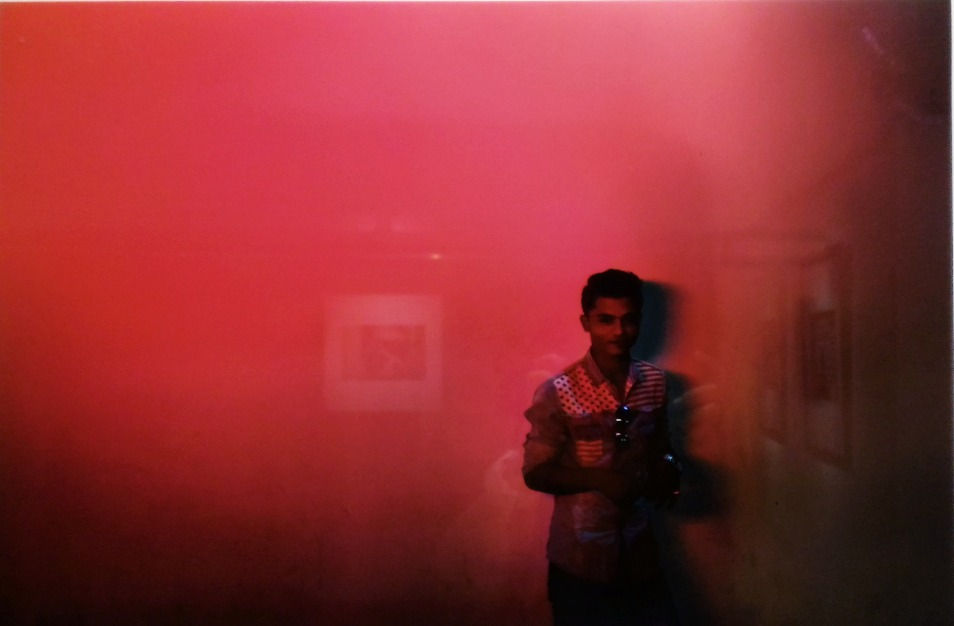Who's Johnny Lim?
- Liberty Woon
- Mar 20, 2017
- 3 min read
Updated: Dec 6, 2021
Introduction to Photography
Yeah, never heard of him. Such random names, everyone could be Johnny Lim! Oh, did u say that he is a main character of a book? Now I got it.

This week, Mr Martin took us to a photography exhibition entitled “Who’s Johnny Lim?” by Manu Mart, a Spanish photographer . The theme for this exhibition was inspired by Tash Aw's “The Harmony Silk Factory”, in which the main character- Johnny Lim, travels around the Straits of Malacca in order to discover his own country.
"The photographer, in this journey, aimed to define the physical and human geography of the Straits of Malacca...although not real, represents the essence of a whole country."
- Adapted from the New Straits Times (2017)

We get to go carpooling all the way to the Oriental Art and Cultural Center in Jalan Klang Lama, Kuala Lumpur yesterday. I had a fun time hitching a ride in Justyna's car and being a human GPS, getting lost in Kuala Lumpur on the way back to the university after the visitation and have to take a huge turn. But we get to venture into places where we never seen before, so it's worth it (not for Justyna cause she have to pay double toll fee and fuel price).
Ok, let's get serious.

Personally, this exhibition is an eye opener to me where I get to see Malaysia in a foreign perspective.
I liked Manu's works on how he manipulates not just strong contrast in shadows but also the primary colours - Red , yellow and blue. His style creates a mystified and sentimental feeling to all his photos, engaging me in a series of thoughts about the hidden context of each photographs. The main thing that caught my attention in the whole exhibition visit is Manu's taste of gallery layout! The photos by Manu are awesome of course. But what makes a gallery interesting? The arrangement of photographs which conveys an interesting story!
This two photographs below are placed in two different wall planes. At a glance, we get the idea of a native person and a gangster-liked fisherman. However, little did we know that they are intentionally placed in the position of facing each other, as if both subjects have come to life, staring at each other.


Besides, another example of interesting gallery layouts are these two photographs that does not relate to each other at first glance.


After some explanation, I realized that both of these photographs are again placed opposite to each other, as if the cat is looking at the crickets. This hinted that one of cat's favorite food is crickets!
I also liked how Manu organizes and groups photos in a way that all photos that show red colour are grouped and arranged from left to right according to time.


Bus Station
One of the photos that I like is this. I like how this photo is taken with vivid colours of blue and red which reminds me about the 3D colours. It is very challenging to find such colour composition, with the shadow showing a different colour effect (greenish blue hue) instead of just black.
Finally, here is a piece by Manu which is totally out of the world. A projected canvas definitely lights up the fun atmosphere in the gallery where all of us can be part of that wonderful masterpiece.

Silhouettes admiring the dark quickening sky, a time to say goodbye.
Although I disagree the way Manu portrays the life of Johnny Lim by taking pictures in a total different setting such as in an urban setting as it can produce a wrong perception into Malaysia's unique history, at the same time, I applauded him for boldly venturing into defining the geography of the Straits of Malacca, but at the end, the question still haunts us:
"Is this way right or wrong?"
"Is there a boundary in art?"
"What is art?"
There are no answers but in our hearts.
COLOUR PHOTOGRAPHY: TO DO OR NOT TO DO
Do I want to do colour photography? Yes, please. Cause colours can show the current atmosphere and highlight important elements in a photograph. In some cases, a photograph will be incomplete without colours, especially in an attempt to show diversity.
